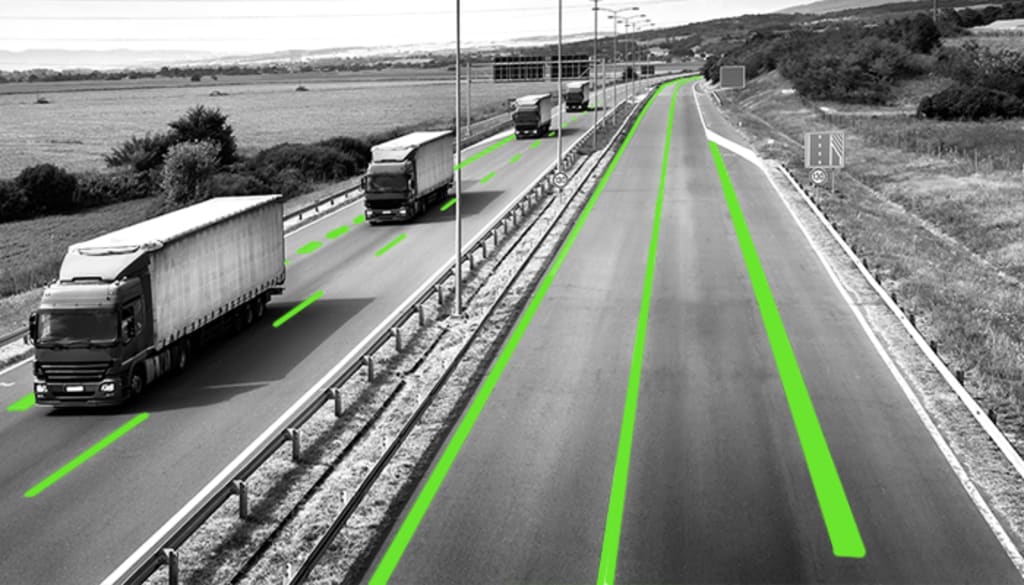Polyline Annotation: Boosting the Rise of Automated Vehicles
What do polyline annotations have to do with car autonomy? An introduction to polyline annotations

Welcome to the future, ladies and gentlemen! It is now time for us to sit back, relax, and let our cars handle the driving for us. That's right, autonomous vehicles have arrived, and they are ready for use. We only need to order and our cars will take us from point A to point B. Thanks to artificial intelligence, machine learning, polyline annotation – our cars are ready to take us on a long ride. Whatever the case may be, humans are living in an exciting time. We will no longer have to deal with road rage, parking problems, or annoying backseat drivers instructing us the directions.
The automotive industry has recently become increasingly interested in automated vehicles. A number of technologies, such as artificial intelligence, computer vision, and machine learning algorithms, have made it possible for vehicles to operate autonomously. The ability of automated vehicles to interpret road markings and signs accurately is, however, one of the challenges that still needs to be addressed. Polyline annotation plays an important role in this regard. The purpose of this article is to discuss polyline annotation and its significance in the development of automated vehicles.
Polyline annotation - what is it?
As part of polyline annotation, images are labelled with lines that represent the boundary of objects. An example of this process is the training of machine learning algorithms for the identification and classification of objects, which is commonly used in computer vision. Vehicles that are equipped with polyline annotations can display road markings, signs, and other relevant objects.
Can you explain what automated vehicles are?
Known as self-driving cars or autonomous vehicles, automated vehicles operate autonomously without any human intervention. To interpret their environment and decide how to navigate it, these vehicles use a combination of sensors, cameras, and computer algorithms. Autonomous vehicles have the ultimate objective of reducing the number of automobile accidents, increasing traffic efficiency, and reducing greenhouse gas emissions.
In automated vehicles, polyline annotations play an important role
The interpretation of road markings and signs accurately is one of the most challenging aspects of the development of automated vehicles. In order to address this challenge, polyline annotation is essential. A machine learning algorithm can be trained to recognize and classify objects accurately by labeling images with lines that represent the boundaries of road markings and signs.
The boundary of a pedestrian crossing can be recognized by a machine learning algorithm using polyline annotation, for example. As soon as the algorithm is trained, it is capable of accurately identifying pedestrian crossings and taking appropriate actions, such as slowing down or stopping, in order to ensure the safety of pedestrians.
Another example of polyline annotation in automated vehicles is the identification of lane markings. Lane markings are crucial for autonomous vehicles as they help them navigate the road safely. By labeling images with polyline annotations that represent lane markings, machine learning algorithms can be trained to recognize and track these markings accurately. This enables automated vehicles to maintain their lanes and avoid collisions with other vehicles.
An analysis of the advantages of polyline annotation in automated vehicles
Several benefits can be derived from polyline annotation in the development of automated vehicles. A few of these benefits are as follows:
Improved Accuracy: As a result of polyline annotation, machine learning algorithms can recognize and classify road markings and signs with greater accuracy. Consequently, automated vehicles are more safe and reliable.
Faster Development: Annotating polylines enables machine learning algorithms to be trained more quickly, thus allowing automated vehicles to be developed more rapidly.
Cost-Effective: Labeling images using polyline annotations is a cost-effective method of enhancing machine learning algorithms. Automated vehicles can therefore be developed at a lower cost.
Flexibility: There are several types of polyline annotations that can be customized to suit different types of road markings and signs. As a result, it can be used in a variety of regions and countries.
Examples of Polyline Annotation in Automated Vehicles
Automated vehicles are already using polyline annotation. A few examples of how polyline annotation is used in industry are provided below:
Waymo: Polyline annotations are used by Waymo, a subsidiary of Alphabet Inc., to label road markings and signs. Through this process, its machine learning algorithms are able to make safe driving decisions and navigate the road accurately.
Tesla: Polyline annotation is also used by Tesla, a leading manufacturer of electric cars, to label road markings and signs. As a result, its vehicles are able to navigate the road safely and avoid collisions.
Baidu: Polyline annotation is used by Baidu, a Chinese search engine company, for the labeling of road markings and signs in China. Due to this, its automated vehicles are capable of recognizing and interpreting the unique road markings and signs that are found in China.
Uber: In order to label images of streets and intersections, Uber, a ride-sharing company, uses polyline annotation. This facilitates the identification and tracking of its drivers' routes by its machine learning algorithms.
Ford: In order to assist in the development of autonomous vehicles, Ford, one of the world's leading automobile manufacturers, uses polyline annotation to label road markings and signs. In this way, its vehicles are able to navigate the road safely and avoid collisions.
Summary
In the development of automated vehicles, polyline annotation plays a crucial role. It involves labeling images with lines, such as road markings and signs, that represent the boundaries of objects. In turn, this improves the safety and reliability of automated vehicles by enabling machine learning algorithms to correctly recognize and classify these objects. Polyline annotation offers several benefits, including improved accuracy, faster development, cost-effectiveness, and flexibility. Many leading companies in the industry are already using the technology to develop automated vehicles, including Waymo, Tesla, Baidu, Uber, and Ford. It is expected that polyline annotation will play an increasingly important role in ensuring the safety and reliability of automated vehicles as the technology continues to evolve.
About the Creator
Matthew McMullen
11+ Years Experience in machine learning and AI for collecting and providing the training data sets required for ML and AI development with quality testing and accuracy. Equipped with additional qualification in machine learning.






Comments
There are no comments for this story
Be the first to respond and start the conversation.